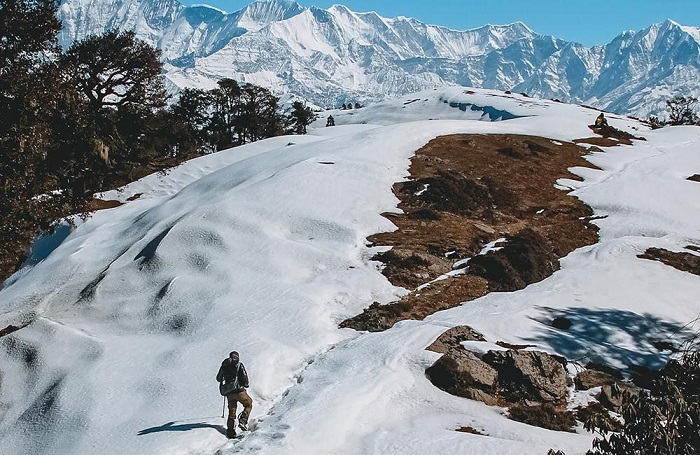Trekking is not just a physical pursuit, it is a psychological negotiation with nature. Every trail holds a character, every route whispers a different identity. Forest-heavy paths build mystery and intimacy with silence, while ridge walks expand perspective. The brahmatal trek, often contrasted with Kedarkantha, represents this duality at its peak. Where Kedarkantha wraps you in shadow, Brahmatal exposes you to sky. This contrast creates one of the most telling experiences of Himalayan exploration.

Forest intimacy versus vast exposure
On Kedarkantha, treks snake through oak, pine, and rhododendron forests. These create protective corridors where light filters softly through canopies. The atmosphere feels nurturing, even spiritual, like nature is cradling you gently. Brahmatal resists that comfort, offering ridges where nothing shields your gaze. It strips away illusion, laying everything bare in brutal yet beautiful proportion. This difference makes the comparison not just environmental, but deeply psychological.
Sky as the dominant presence
The moment you rise onto the Brahmatal ridges, the sky becomes your ruler. Every direction pulls your eye upward, outward, infinitely expanding. Forest treks rarely surrender this boundless sensation, they keep you grounded. But here, the blue dome crashes against snowfields with staggering drama. Trekup India often describes this shift as one of Brahmatal’s defining elements. That collision of ridge and sky changes the definition of trekking itself.
Weather’s unfiltered hand
Forests shelter trekkers from Himalayan tantrums, buffering wind, snow, and cold. Ridges abandon that shield, forcing full exposure to weather’s brutality. One minute clear sunshine, the next rolling mists devour the line of sight. That volatility demands sharper awareness, stronger preparation, more psychological endurance. Brahmatal ridges reveal weather not as backdrop, but as direct character. It turns the trek into theater where nature holds absolute authority.
Solitude carved by openness
Forests often echo with intimacy, sounds of birds and whispers of leaves. But on the ridges, sound scatters into nothingness, leaving vast silence. That silence carves solitude into your bones, making every step heavier with thought. You feel both dwarfed and exalted in the same instant. Brahmatal does not comfort with closeness, it isolates with clarity. And that isolation makes the trek profoundly personal.
Views without interruption
Forests tease glimpses, mountains framed between trunks, light filtered by branches. But Brahmatal ridges unveil panoramas unbroken, layers of peaks rolling endlessly. Nanda Ghunti and Trishul crash against your vision without restraint or filter. The scale is overwhelming, an uncut cinematic shot lasting for hours. Kedarkantha gifts mystery, Brahmatal delivers revelation with uncompromising force. That alone makes the ridge walk an unforgettable encounter.
Conclusion
The Brahmatal ridges stand not just as a landscape, but as a philosophy of movement. They reveal how vulnerability can feel liberating, how exposure can carve resilience. Compared with Kedarkantha’s enclosed forests, Brahmatal speaks in a louder, more elemental voice. To trek there is not to wander in nature, but to wrestle with its openness. That difference is what makes Brahmatal unforgettable among Himalayan journeys.
